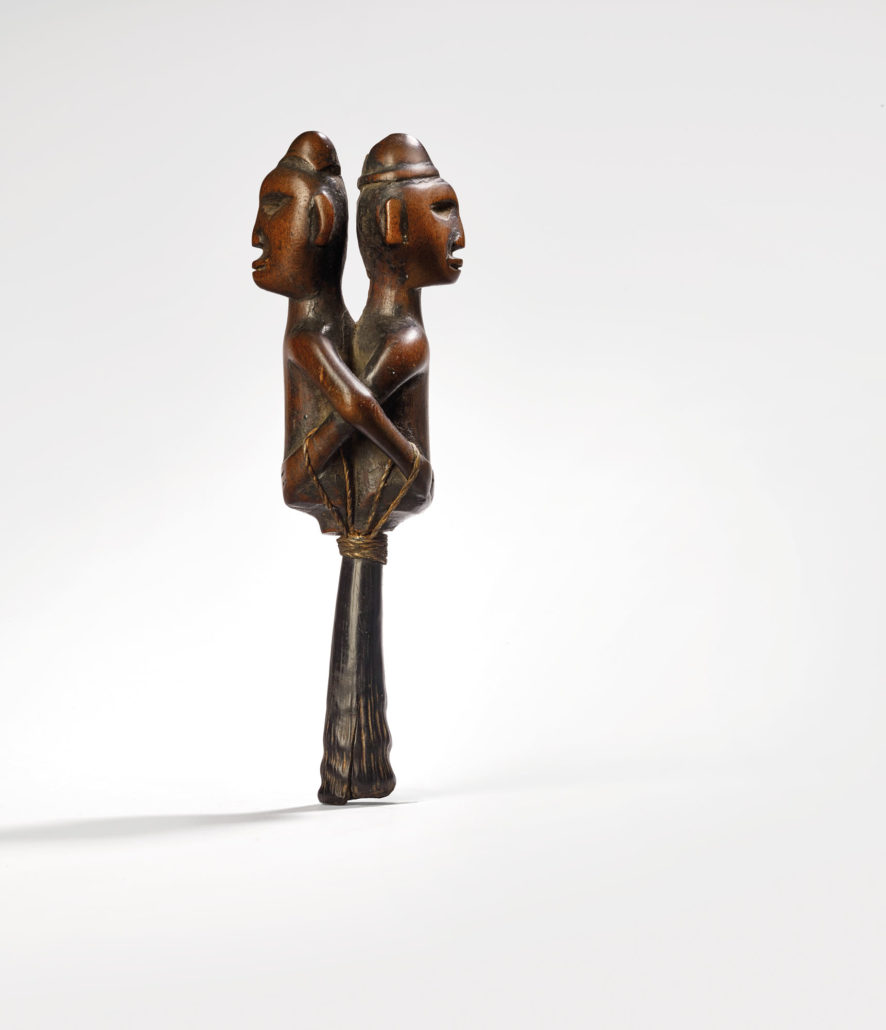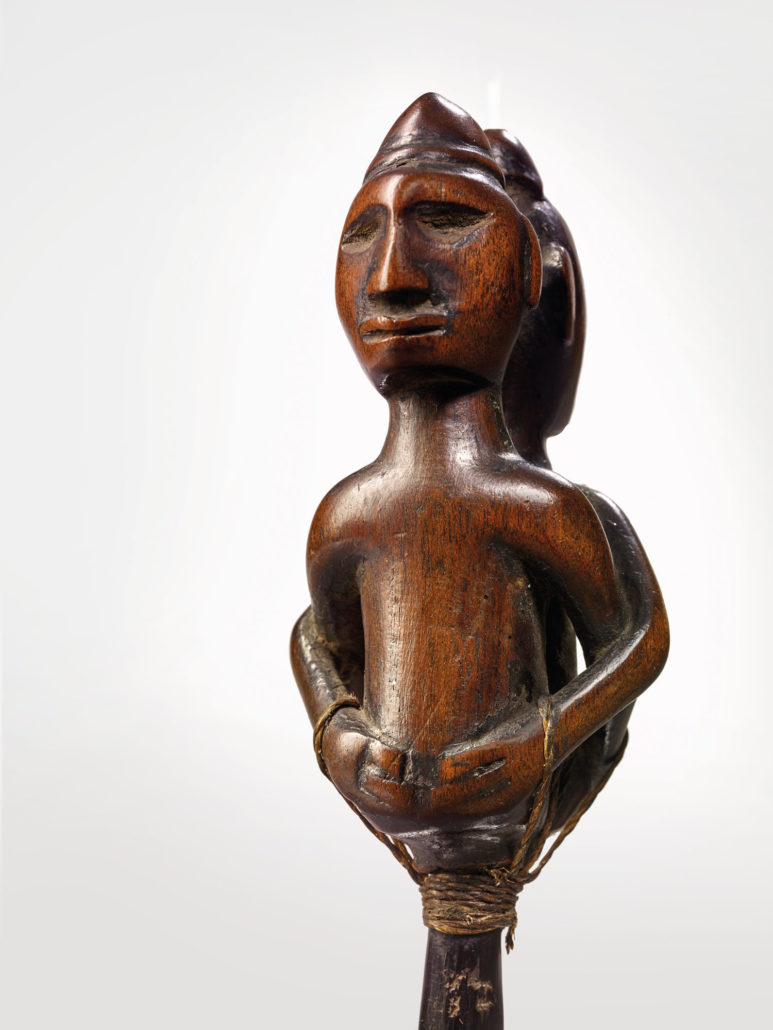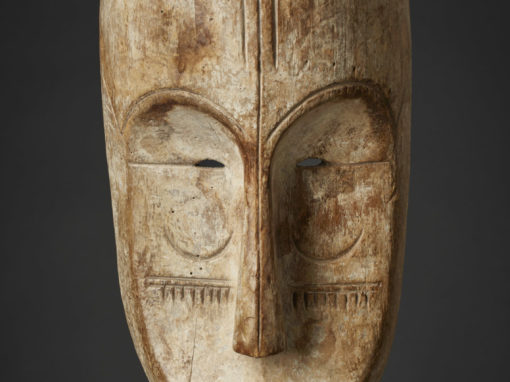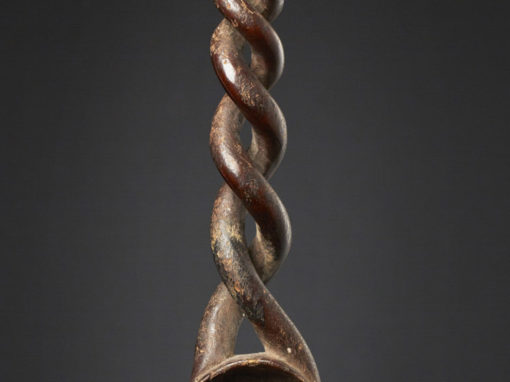The kingdom of Kongo was at the height of its power in 1482, when Portuguese sailors first visited the coast of central Africa. The kingdom, founded between 1350 and 1400, was a model of centralized government, with a divine king and a network of advisers, provincial governors, and village chiefs who ruled as many as three million people. Portuguese navigators brought with them Catholic missionaries who converted the kings of Kongo leading to the creation of the first Christian kingdom south of the Jahra until its collapse in the mid-eighteenth century (Metmuseum.org)

Kongo Vili Sifflet (Congo Whistle)
origin: Democratic republic of congo
region: Nsiba
age : XX century
object: congo whistle (Sifflet)
size: height 16,0 cm (6,20 inch), shoulder wide 3,0 (1,18 inch), hips wide 4,0 (1,57 inch)
material: wood, duiker horn (Sylvicapra Grimmia), patina
The two male figures are depicted back-to-back, arms intercrossed behind their bodys holding onto the other. It cannot be determined what there relation is. But beyond time they remain inseparable. The two figures are executed as torso´s (and not full body like some other whistles) wich suggests that the focus meant to emphasize the importance of this interconnection. In a dangerous situation or hostile environment this interconnection could be interpreted as the strongest stand by two individuals against what will come from any direction. On a spiritual level it is a minimalistic but strong eternal symbol of unity and bond. Whistles are sometimes ornamented with family groups and this one might represent brothers, hunters or clan family members. The figures are mounted on a small antelope horn (Bush Duiker “Sylvicapra Grimmia”) that serves as a whistle.
Such whistles were used only by initiated men and important people such as “banganga” because they were thought to have supernatural or magical powers. Hunters used them both to signal to one another in the forest during group hunts and to bewitch the hunting game so that it would come out in their favor. Diviner-healers used them for rain-making ceremonies and for curing the sick. A nineteenth-century eyewitness report describes a healer who, with the magical assistance of his whistle, was able to extract bullets from a man who had been shot by sucking forcefully on the wound.
Note:
According to „Bertil Söderberg“, the rarity of these whistles – associated with the cult of nkisi and specially designed for hunting – is explained by the fact that they belonged exclusively to ’socially prominent people, such as medicine men (banganga) and the chiefs of the village (1974: 26-27), Sotheby´s, Arts d´afrique et d´océanie, 15.Juni 2011
This Kongo-Vili, Sifflet is exceptional for the minimalism in which it is executed and the way the two figures are connected. (contains excerpts Metmuseum.org)
It is a trouve to find such a work of traditional African art that handles figures so completely aesthetic from any point of view.
This object in the collection resembles an similar Kongo-Vili Sifflet auctioned by Christie´s. Shared is the overall expression of interconnection and carving style containing small variations.
(Christie´s Shapes, L´univers des Formes,African and Oceanic Art, 03. December 2020, Lot 5, Sifflet Kongo-Vili, Nsiba )






